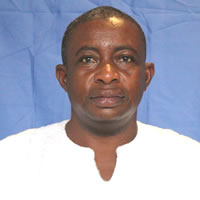Vulnerability
The government vision of creating an all-inclusive society through the provision of sustainable mechanism for protecting persons living in extreme poverty vulnerability and exclusion is the national social protection strategy. It is founded on the principle that every Ghanaian matter and is capable of contributing his or her quota to National Development. Ghana has recorded high levels of poverty, high level of malnutrition and low level of education. These development issues are key to the Sustainable Development Goals.
To achieve the Sustainable Development Goals, the trend needs to be reversed. The National Social protection strategy is an appropriate and effective tool against an array of life cycle risks and stocks such as unemployment, sickness, disabilities, old age and the extreme poor are unable to absorb. Social protection strategy is a way of investing in the extreme poor, recognizing the fact that they possess the potential to contribute to National Development. The programmes that are undertaken in the District are Livelihood Empowerment Against Poverty (LEAP), School Feeding Programme, and Ghana Social Opportunities Project.
Child Rights, Protection and Promotion
The main forms of child abuse especially the girl-child in the District include abduction, early marriage and elopement. Even though such cases are mostly not reported formally to the appropriate authorities in the District, the traditional leaders in the district have condemned such practices with no measure. Recently queen mothers of Issa, Wogu and Fian registered their dissatisfaction about these phenomena and called for drastic measures to curb this situation.
Persons with Disabilities (PWDs)
The department has started collecting data on persons with disabilities. We have a total of 454 persons with various disabilities. Out of this figure, 252 have applied for the 2% District Assembly Common Funds for PWDs. Table 1.25 below indicates the type of disabilities and the age groupings. It is sad to mention that epilepsy in children is high and the department is calling on the Ghana Health Service to intensify education on antenatal and postnatal treatment and services to pregnant and lactating mothers as a step to reverse the trend.
Livelihood Empowerment Against Poverty (LEAP)
This program provides conditional cash transfers to the extreme poor households with no alternative means of meeting their subsistence needs. These include the aged poor, persons with severe disabilities, Orphans and vulnerable children. The communities covered under this programme include-Pulbaa, Konzokala, Jolinyiri and Duang with a total of three hundred and ninety six (396) households benefiting. The programme plans to expand to seven (7) more communities by the end of the first quarter of 2014. These communities include: Dakpaa, Owlo, Kojopere, Tabiasi, Jimpensi/Kenkele, Wogu and Issa. Households targeting has begun in Kojokpere,Tabiasi and Jimpensi/Kenkele.
Ghana Social Opportunities Project (GSOP)
The vision of this project is to enable extremely poor households leap out of the cycle of poverty. GSOP complements the Livelihood Empowerment Against Poverty program. It has an objective of increasing access to conditional cash transfers nationwide, increase access to employment and cash earning opportunities to the rural poor and improve economic and social infrastructure.
The communities covered include- a dugout project inTabiasi, a climate change project in Tabiesi, a feeder road project in Sabogu, a dug out project in Pulbaa, a feeder roads project in Dakpaa, Challa-Banongyiri and Sazie-Tabiesi, dugouts projects in Owlo, Bussie and Wogu. The Assembly and the Department made two community visits to each of the beneficiary communities and the registration of workers for the Labour Intensive Public Works is ongoing.
Women participation in decision-making was very insignificant in the past. They were among the most vulnerable and lacked skills that should be empowered economically. Girl-child education was also considered as a waste of resources. This wrong perception about the female cohort has taken a new dimension with pragmatic policies put in place to integrate them into the mainstream of society.
The new Ministry of Gender, Children and Social Protection is doing everything possible to promote the interest of the vulnerable in society particularly women and children. In the pursuant of this objective, the District Assembly in collaboration with relevant stakeholders, including NBSSI and NGOs, have supported and built the capacity of women socially, economically and politically in the district. Economically about 101 women groups and 270 individuals across the District have been empowered with entrepreneurial skill training, agro processing machines and financial support to actively engage in small scale economic activities to improve upon the standard of living.
The gesture has raised the image of women since they are currently earning incomes and less dependent on their husbands for household needs. Politically, a number of sensitization workshops have been organized for about 500 women in the ten Area Councils in the District. This is to increase their assertiveness to participate in the local governance of development in the District in order to ensure that their views are represented in the implementation of programmes and projects.
The capacities of women leaders and civic unions have also been built through self- empowerment trainings to fight the course of women through public presentations. Women in this direction have been trained in leadership and public speaking skills to enhance their speaking against the abuse of women’s rights and their perpetrators. Women in the District have benefited immensely through the effort of all the development stakeholders. Notwithstanding these achievements a number of women still lack credit facilities to undertake economic ventures while those who have received credit assistance have refused timely repayment. This behaviour has constrained the effort of extending similar support services to other women who badly need assistance to empower themselves economically.
Gender Issues
The 2010 Population and Housing Census indicate that females constitute about 51% of the total population with 49% for males. Farming is the main economic stay of the people in the District constituting 78% of the total work force. This sector is a male dominated one with females constituting only 15.1%. The men normally clear for women to cultivate. Regarding trading activities women are mostly visible in this sector.
They are mostly engaged in the buying and selling of commodities such as maize, yams, and other food items. Others too engage in pito brewing and burning of fuel wood. Most of the females drop out of school after completing Junior High School and engage in trading activities. Others too engage in apprenticeship in hairdressing and sewing. This probably explains why they dominate the male counterparts in trading activities in the District. So far, there have not been any concrete efforts aimed at mobilising women for development. It is hoped that development policies and programs that will not discriminate against any sex and safeguard the interest of both will be pursued for the overall development of the people in the District.
Date Created : 11/14/2017 3:10:17 AM





 facebook
facebook twitter
twitter Youtube
Youtube TOLL FREE 0800 430 430
TOLL FREE 0800 430 430 +233 593 831 280
+233 593 831 280 GPS: GE-231-4383
GPS: GE-231-4383 info@ghanadistricts.com
info@ghanadistricts.com Box GP1044, Accra, Ghana
Box GP1044, Accra, Ghana